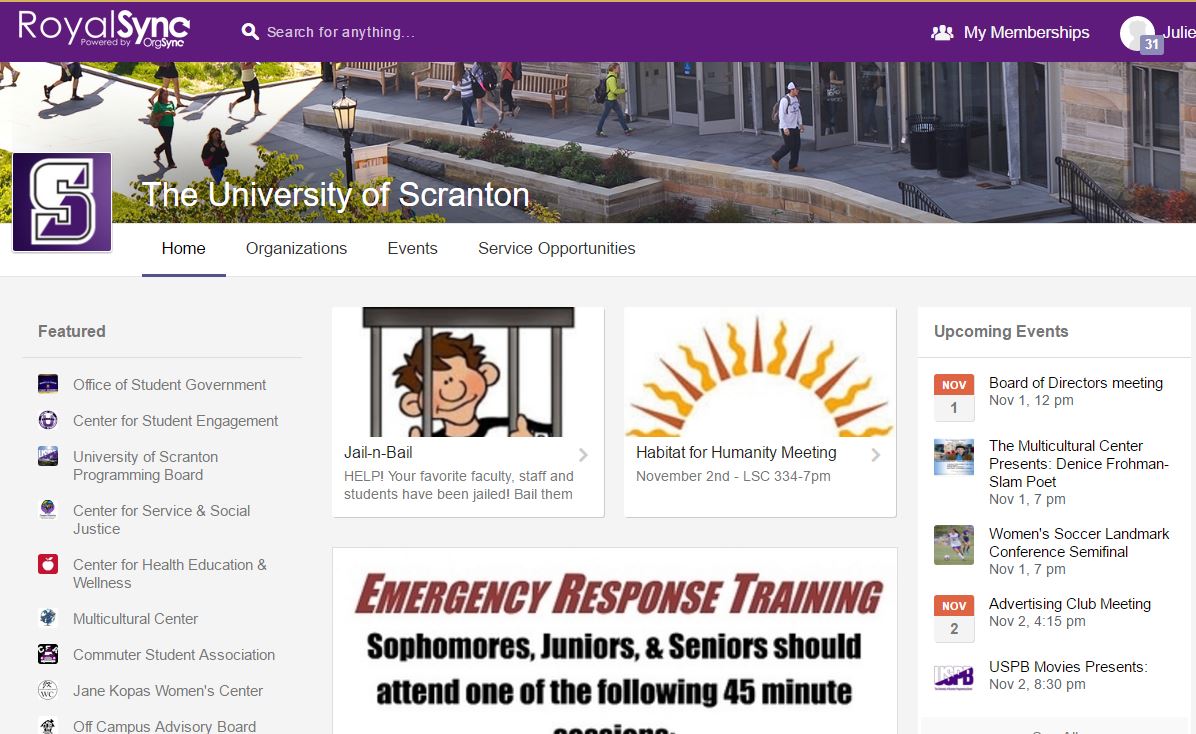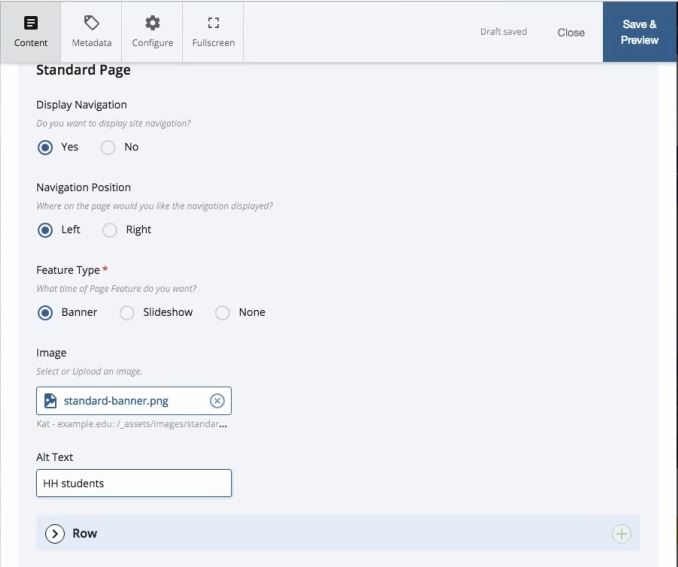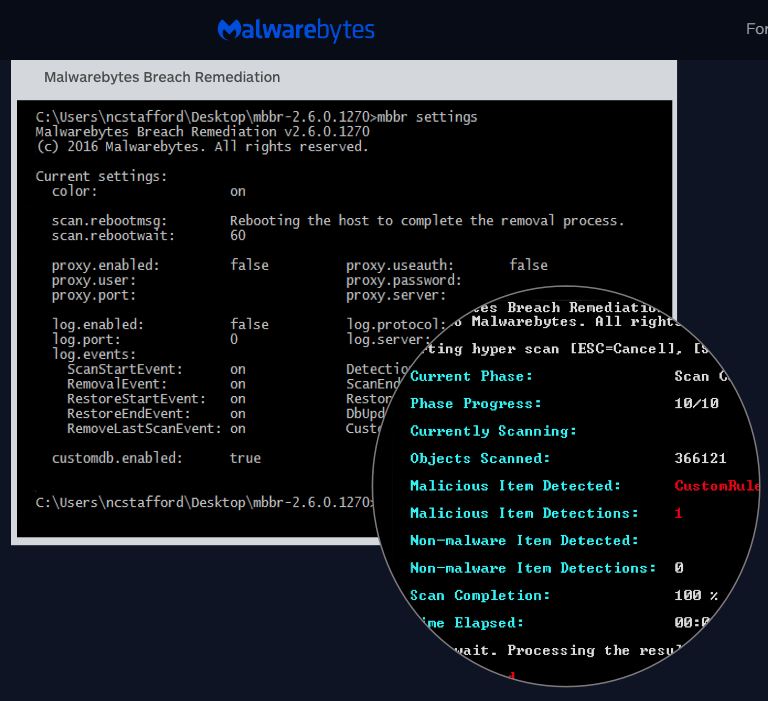 OrgSync, rebranded as RoyalSync at the University, is a campus engagement tool that connects our students to organizations, programs and departments on campus in a private online community. As a member of a club, class or program, students are able to stay informed of campus activities, register for events, swipe to confirm their event attendance and fill out online forms.
OrgSync, rebranded as RoyalSync at the University, is a campus engagement tool that connects our students to organizations, programs and departments on campus in a private online community. As a member of a club, class or program, students are able to stay informed of campus activities, register for events, swipe to confirm their event attendance and fill out online forms.
New student accounts are created at the beginning of each academic term. Incoming students are placed in their anticipated graduation class portal, so that they may start networking with their fellow classmates immediately. Student engagement has historically been associated with student achievement and retention so beginning with the class of 2021, new accounts will be created prior to summer orientation. Shannon Murphy Fennie, Director of the Center of Student Engagement and Tricia Cummings, Coordinator for Clubs and Organizations, are hoping to engage incoming students early on. Not only can those students stay informed about orientation, clubs and activities early in the process, but will have a more positive experience as they assimilate into campus life.
Although our campus has been using RoyalSync for a few years, we have recently completed the implementation of the RoyalSync Application Programming Interface (API). The OrgSync API allows us to request and exchange data. Thanks to this improvement and collaborative effort between our Information Resources and Student Formation and Campus Life Divisions, we can now push student data from Banner into RoyalSync. This automated process is secure and occurs every night, so that we can keep the information in RoyalSync as accurate as possible. Data can also be pulled out of the program to more accurately build alumni profiles.
How do we benefit from this improvement?
This engagement tool not only brings our campus closer together, but it has helped our campus in improving the following:
- Central location for information regarding student club and their events/programs
- Fragmented Web pages for clubs and organizations have been eliminated
- Better information sharing
- Targeted communication to specific groups
- Minimizes paper usage
- Tracks co-curricular involvement and student attendance
- Less manual work due to automated update processes
What could be next?
OrgSync continuously strives to improve their services and driving student engagement to the next level. As such, our campus continues to investigate the ways in which we can apply their tools to create more efficient workflows and procedures. Because this tool harvests a lot of data concerning student involvement, we anticipate the development of reports that could be used for job searches and assessment.
Check RoyalSync out
Although RoyalSync is almost exclusively used by our students, faculty and staff still have the ability to access and peruse it.
To access RoyalSync:
- Log into my.scranton.edu
- Go to the Employee tab
- In the middle of the page you will find a link for RoyalSync
- Select the Click here link
- Welcome to Royal Sync. Feel free to browse around.
 Did you know you can have your voice mail messages forwarded to your email as a .wav file so you could listen to the calls from your smartphone?
Did you know you can have your voice mail messages forwarded to your email as a .wav file so you could listen to the calls from your smartphone?
 If you have clicked on the pencil icon in the my.scranton portal, then you know what I am referring to when I mention CMS.
If you have clicked on the pencil icon in the my.scranton portal, then you know what I am referring to when I mention CMS.
 Computers for full-time faculty are being deployed and our goal is to have them completed before the end of the Fall semester. Staff systems will follow in the Spring. This year, we introduced a major change to the replacement cycle for faculty primary systems. Full-time faculty are now on an automatic four year replacement cycle, which allows IT to be inclusive and attentive to all our full-time faculty’s needs. We would like to remind everyone that due to the high costs of maintaining and replacing desktop equipment, each employee should only have ONE system.
Computers for full-time faculty are being deployed and our goal is to have them completed before the end of the Fall semester. Staff systems will follow in the Spring. This year, we introduced a major change to the replacement cycle for faculty primary systems. Full-time faculty are now on an automatic four year replacement cycle, which allows IT to be inclusive and attentive to all our full-time faculty’s needs. We would like to remind everyone that due to the high costs of maintaining and replacing desktop equipment, each employee should only have ONE system. OrgSync, rebranded as RoyalSync at the University, is a campus engagement tool that connects our students to organizations, programs and departments on campus in a private online community. As a member of a club, class or program, students are able to stay informed of campus activities, register for events, swipe to confirm their event attendance and fill out online forms.
OrgSync, rebranded as RoyalSync at the University, is a campus engagement tool that connects our students to organizations, programs and departments on campus in a private online community. As a member of a club, class or program, students are able to stay informed of campus activities, register for events, swipe to confirm their event attendance and fill out online forms.


